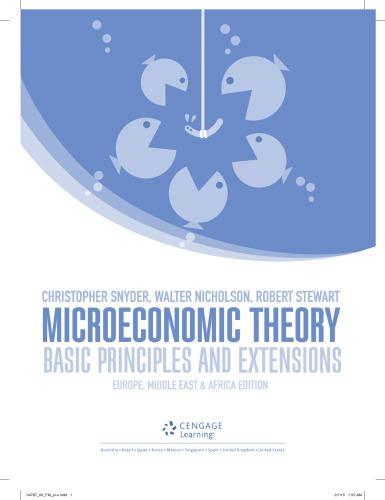What would the equilibrium look like in the full-information case? Suppose the quality q of used cars
Question:
What would the equilibrium look like in the full-information case? Suppose the quality q of used cars is uniformly distributed between 0 and 20 000. Sellers value their cars at q. Buyers
(equal in number to the sellers) place a higher value on cars, q +
b, so there are gains to be made from trade in the used-car market. Under full information about quality, all used cars would be sold. But this does not occur when sellers have private information about quality and buyers know only the distribution. Let p be the market price.
Sellers offer their cars for sale if and only if q ≤ p. The quality of a car offered for sale is thus uniformly distributed between 0 and p, implying that expected quality is 3
p 0
q a1 pbdq =
p 2
(16.66)
(see Chapter 2 for background on the uniform distribution). Hence, a buyer’s expected net surplus is p
2
+ b − p = b −
p 2
. (16.67)
There may be multiple equilibria, but the one with the most sales involves the highest value of p for which Equation 16.67 is non-negative: b – p/2 = 0, implying that p* = 2b. Only a fraction 2b/20 000 of the cars are sold. As b decreases, the market for used cars dries up.
Step by Step Answer:

Microeconomic Theory Basic Principles And Extensions
ISBN: 9781473729483
1st Edition
Authors: Christopher M Snyder, Walter Nicholson, Robert B Stewart






